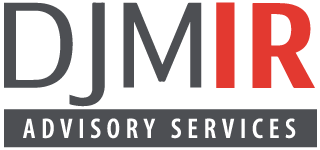What Is Bullying or Harassment?
It is important to distinguish between a person reasonably exercising their legitimate authority at work and an instance of bullying or harassment. Directors, Nominated Supervisors, Room or Group Leaders may be required to direct and control how work is performed and are responsible for monitoring workflow and provide feedback to employees on their work performance. Feedback provided with the intention of assisting staff to improve performance or work-related behavior does not constitute bullying, however care should be taken to ensure that any performance problems are identified and dealt with in an objective and constructive way that is neither humiliating nor threatening. Legal FrameworkThere is a raft of legislation defining the responsibilities of management and staff in addressing and dealing with workplace harassment and bullying issues. The principal legislative sources are as follows:
What is Workplace Harassment?Workplace harassment consists of offensive, abusive, belittling, bullying or threatening behaviour directed at an individual or group of employees. Harassment in the workplace can range from excluding and isolating a person from workplace activities to extreme behaviours such as yelling, threats, and even physical assault. The behavior associated with harassment is unwelcome, unsolicited, unreciprocated and usually (but not always) repeated. It makes the workplace or association with work unpleasant, humiliating or intimidating for the people or group targeted by this behavior. It can also impact on an individual or group's ability to work effectively. Examples of workplace harassment may include:
What is not Workplace Harassment?Workplace harassment should not be confused with legitimate and reasonable management discussions or actions, provided these are conducted with respect and courtesy. Reasonable and legitimate management actions can include, but are not limited to, the following:
What is Bullying?Workplace bullying is repeated, unreasonable behaviour directed towards a person or group of persons at a workplace, which creates a risk to health and safety. ‘Repeated’ refers to the persistent or ongoing nature of the behavior, not the specific type of behavior, which may vary. For example, bullying may comprise a combination of behaviors including unwarranted criticism or insults, spreading malicious rumors, deliberately withholding information or resources and influencing others to exclude or isolate the targeted person or persons. In many instances bullying appears to begin as discreet and indirect behaviors escalating over time into more open and direct behaviors. ‘Unreasonable behavior’ means behavior that a reasonable person, having regard to the circumstances, would expect to victimize, humiliate, undermine or threaten. It includes overt and covert types of behavior such as:
What is not Bullying?A single incident of workplace harassment does not constitute workplace bullying, although it may be distressing or harmful to the targeted individual and should not be tolerated. A single incident of harassment may be a warning sign for bullying and steps should be taken to prevent a reoccurrence. Be aware that workplace harassment, whether a single or repeated occurrence, may breach the Commonwealth anti-discrimination legislation, the Workplace Health and Safety Act 2011 or the Fair Work Act 2009. Further help and assistanceIf you need assistance to develop or review your offers of employment, restraint or confidentiality agreements, contact DJMIR on (02) 6236 8966 or my email via djm@djmir.com.au |
Article published: 05/02/2015 | Last modified: 09/02/2015 |
